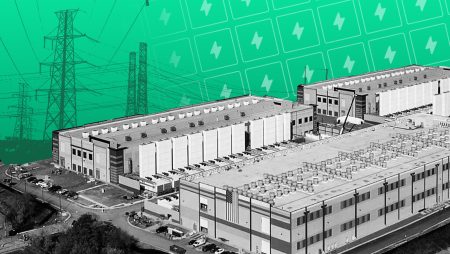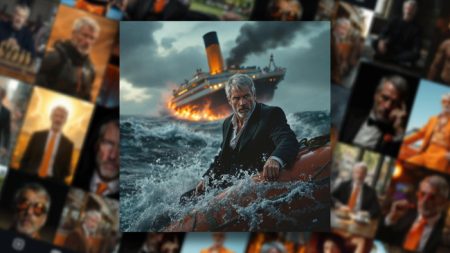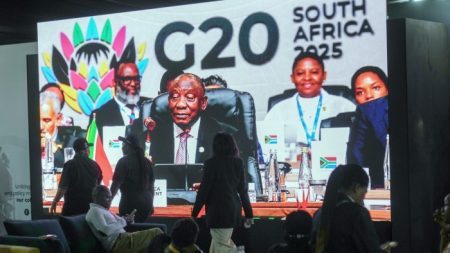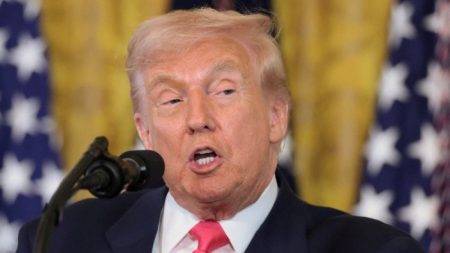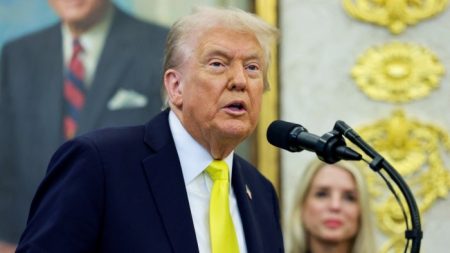Stay informed with free updates
Simply sign up to the War in Ukraine myFT Digest — delivered directly to your inbox.
The writer is a lecturer at Stanford University and former deputy secretary-general of Nato
Vladimir Putin has been at it again, rattling the nuclear sabre after a brief hiatus. The Russian president largely fell silent in 2023 once Ukraine’s armed forces became bogged down — no need for sabre-rattling when his guys were winning.
The current burst of nuclear talk seems linked to two objectives. First is Putin’s need to worry the Republicans in Congress who are holding up American support for Ukraine: the more he makes them nervous, the better. Second is Putin’s answer to those who say Russia came close to using nuclear weapons in October 2022, when it was the Russian armed forces who, with their backs to the Dnipro River, were poised for defeat. Not so, he says: I had no intention of using nuclear weapons. Hmm. That is not what US intelligence told the White House.
All of this chatter is calculated to shape decisions in Washington and other Nato capitals. It is a form of influence-making called “intrawar deterrence”.
Back when I worked at the Rand Corporation, in the nursery for nuclear priests, intrawar deterrence was envisaged as an orderly move up and down the escalation ladder, governed by skilful diplomacy and rational actors. Putin has done his best to disturb that vision, but so have other players. Intrawar deterrence in the current war in Ukraine is not orderly and often seems irrational. But it is working.
Take, for example, the original strategy laid out by President Joe Biden at the outset of the war: no boots on the ground, but every ounce of assistance that the Nato alliance could muster for Ukraine. This strategy led to some clear rules of engagement for the US and Russia: the Americans provided long-range missiles to Ukraine, but did not allow the Ukrainians to use them to strike Russian territory. Russia, in turn, has not struck at Nato territory but has done everything it can to destroy Nato military equipment once it arrives in Ukraine.
Biden is intent on avoiding a war between Nato and Russia that could escalate to a general nuclear exchange. Vladimir Putin appears to accept this goal, also having no interest in a general nuclear war. Although some experts have wrung their hands about Russia deterring Nato, Nato has also been deterring Russia.
The Ukrainians have likewise been playing the intrawar deterrence game, with remarkable success. Their attacks on Russian naval forces have driven the Russian fleet to eastern regions of the Black Sea, out of range of Ukrainian missiles. Today, Crimea is at best contested territory, limited in its utility as either a naval base or logistics hub for the Russian army in eastern Ukraine. To a significant degree, the Ukrainians have deterred the Russians from operating in Crimea.
Ukraine has used this success to establish a shipping corridor in the western regions of the Black Sea. Kyiv has taken advantage of proximity to Nato territory, ensuring that shipping passes close to the coasts of Romania, Bulgaria and Turkey — all Nato allies willing to support the transit of commercial ships through the Black Sea.
This has been another form of intrawar deterrence, bolstered by shipping and insurance interests. The companies carrying on maritime trade in the Black Sea have ensured that both Russia and Ukraine recognise the downsides of striking each other’s commercial shipping — a lesson sadly lost on the Houthis in the Red Sea.
Commercial interests were never an issue in the practice of intrawar deterrence in the cold war. Then, it was all about state actors and what they could do to halt and reverse escalation. Military forces certainly played a role, including for signalling — nuclear signalling was a special mania of the period. Diplomacy was important for conveying messages and ensuring they were received.
But the role of companies? It existed only insofar as media companies participated in communicating between the sides. The prominently placed interview of a top leader in a national newspaper could have enormous value as a communication device, especially in the Soviet era when there were so few routine links between Moscow and Washington.
Nowadays, this role of media companies is supercharged with the advent of social media platforms. These can speed up the communication of messages among influential actors, such as the Russian military bloggers who have criticised their army’s performance and ensured that stories of its failures are widely known. Their role as hardline influencers has boxed Putin in, giving him less room for manoeuvre within his own system than he might otherwise have had. But their messaging is also contributing to intrawar deterrence, conveying to Kyiv, too, the limits of its own space for action.
Escalation and de-escalation in this war are thus far from an orderly ladder — it’s not a matter of straight up and straight down. Instead intrawar deterrence takes place in a multi-faceted environment with many actors. It is a swirl of action involving forces at combat, leaders in Kyiv and Moscow, and the countries of Nato interacting with Russia. The forces that deter are a mysterious mind game. Although not infallible, they have worked so far — especially in preventing nuclear escalation. We need to keep it that way.
Read the full article here









